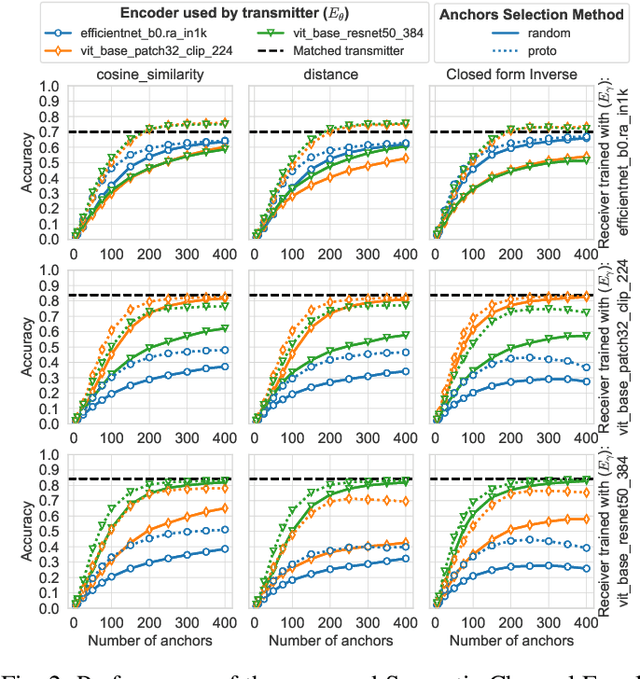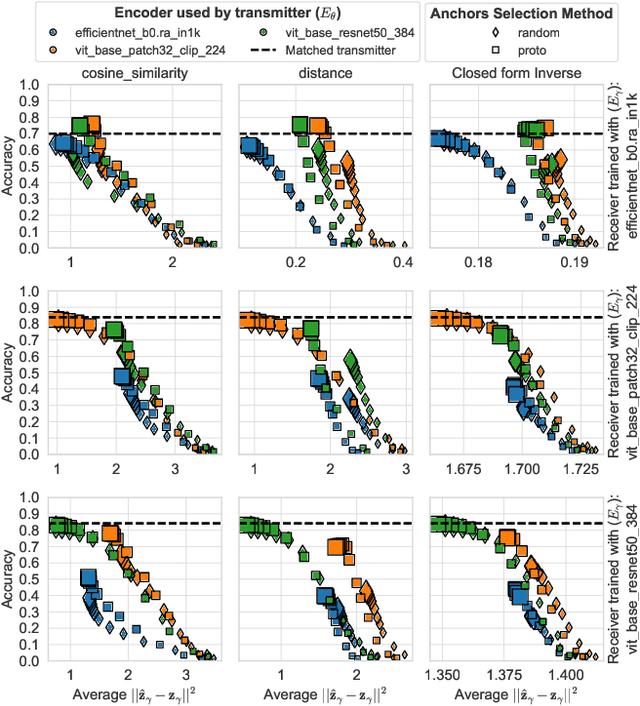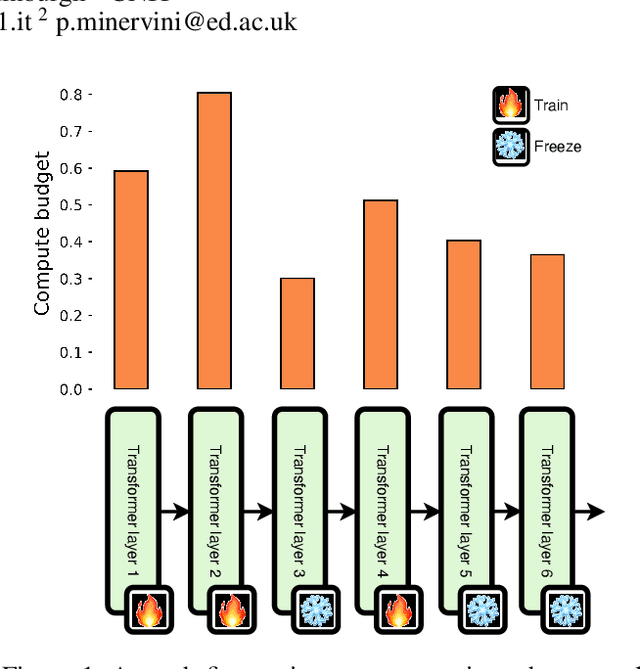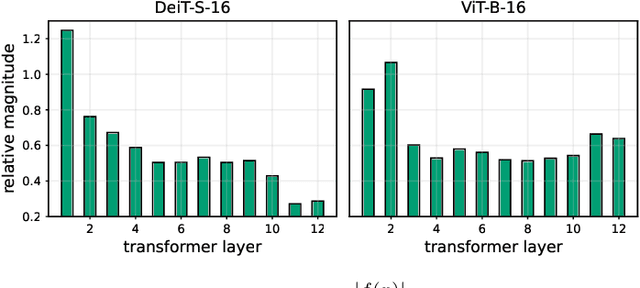Paolo Di Lorenzo
Over-the-Air Edge Inference via End-to-End Metasurfaces-Integrated Artificial Neural Networks
Mar 31, 2025Abstract:In the Edge Inference (EI) paradigm, where a Deep Neural Network (DNN) is split across the transceivers to wirelessly communicate goal-defined features in solving a computational task, the wireless medium has been commonly treated as a source of noise. In this paper, motivated by the emerging technologies of Reconfigurable Intelligent Surfaces (RISs) and Stacked Intelligent Metasurfaces (SIM) that offer programmable propagation of wireless signals, either through controllable reflections or diffractions, we optimize the RIS/SIM-enabled smart wireless environment as a means of over-the-air computing, resembling the operations of DNN layers. We propose a framework of Metasurfaces-Integrated Neural Networks (MINNs) for EI, presenting its modeling, training through a backpropagation variation for fading channels, and deployment aspects. The overall end-to-end DNN architecture is general enough to admit RIS and SIM devices, through controllable reconfiguration before each transmission or fixed configurations after training, while both channel-aware and channel-agnostic transceivers are considered. Our numerical evaluation showcases metasurfaces to be instrumental in performing image classification under link budgets that impede conventional communications or metasurface-free systems. It is demonstrated that our MINN framework can significantly simplify EI requirements, achieving near-optimal performance with $50~$dB lower testing signal-to-noise ratio compared to training, even without transceiver channel knowledge.
Topological Dictionary Learning
Mar 14, 2025Abstract:The aim of this paper is to introduce a novel dictionary learning algorithm for sparse representation of signals defined over combinatorial topological spaces, specifically, regular cell complexes. Leveraging Hodge theory, we embed topology into the dictionary structure via concatenated sub-dictionaries, each as a polynomial of Hodge Laplacians, yielding localized spectral topological filter frames. The learning problem is cast to jointly infer the underlying cell complex and optimize the dictionary coefficients and the sparse signal representation. We efficiently solve the problem via iterative alternating algorithms. Numerical results on both synthetic and real data show the effectiveness of the proposed procedure in jointly learning the sparse representations and the underlying relational structure of topological signals.
Semantic and Goal-oriented Wireless Network Coverage: The Area of Effectiveness
Feb 25, 2025Abstract:Assessing wireless coverage is a fundamental task for public network operators and private deployments, whose goal is to guarantee quality of service across the network while minimizing material waste and energy consumption. These maps are usually built through ray tracing techniques and/or channel measurements that can be consequently translated into network Key Performance Indicators (KPIs), such as capacity or throughput. However, next generation networks (e.g., 6G) typically involve beyond communication resources, towards services that require data transmission, but also processing (local and remote) to perform complex decision making in real time, with the best balance between performance, energy consumption, material waste, and privacy. In this paper, we introduce the novel concept of areas of effectiveness, which goes beyond the legacy notion of coverage, towards one that takes into account capability of the network of offering edge Artificial Intelligence (AI)-related computation. We will show that radio coverage is a poor indicator of real system performance, depending on the application and the computing capabilities of network and devices. This opens new challenges in network planning, but also resource orchestration during operation to achieve the specific goal of communication.
Learning Sheaf Laplacian Optimizing Restriction Maps
Jan 31, 2025Abstract:The aim of this paper is to propose a novel framework to infer the sheaf Laplacian, including the topology of a graph and the restriction maps, from a set of data observed over the nodes of a graph. The proposed method is based on sheaf theory, which represents an important generalization of graph signal processing. The learning problem aims to find the sheaf Laplacian that minimizes the total variation of the observed data, where the variation over each edge is also locally minimized by optimizing the associated restriction maps. Compared to alternative methods based on semidefinite programming, our solution is significantly more numerically efficient, as all its fundamental steps are resolved in closed form. The method is numerically tested on data consisting of vectors defined over subspaces of varying dimensions at each node. We demonstrate how the resulting graph is influenced by two key factors: the cross-correlation and the dimensionality difference of the data residing on the graph's nodes.
Quantum Simplicial Neural Networks
Jan 09, 2025



Abstract:Graph Neural Networks (GNNs) excel at learning from graph-structured data but are limited to modeling pairwise interactions, insufficient for capturing higher-order relationships present in many real-world systems. Topological Deep Learning (TDL) has allowed for systematic modeling of hierarchical higher-order interactions by relying on combinatorial topological spaces such as simplicial complexes. In parallel, Quantum Neural Networks (QNNs) have been introduced to leverage quantum mechanics for enhanced computational and learning power. In this work, we present the first Quantum Topological Deep Learning Model: Quantum Simplicial Networks (QSNs), being QNNs operating on simplicial complexes. QSNs are a stack of Quantum Simplicial Layers, which are inspired by the Ising model to encode higher-order structures into quantum states. Experiments on synthetic classification tasks show that QSNs can outperform classical simplicial TDL models in accuracy and efficiency, demonstrating the potential of combining quantum computing with TDL for processing data on combinatorial topological spaces.
Goal-oriented Communications based on Recursive Early Exit Neural Networks
Dec 27, 2024Abstract:This paper presents a novel framework for goal-oriented semantic communications leveraging recursive early exit models. The proposed approach is built on two key components. First, we introduce an innovative early exit strategy that dynamically partitions computations, enabling samples to be offloaded to a server based on layer-wise recursive prediction dynamics that detect samples for which the confidence is not increasing fast enough over layers. Second, we develop a Reinforcement Learning-based online optimization framework that jointly determines early exit points, computation splitting, and offloading strategies, while accounting for wireless conditions, inference accuracy, and resource costs. Numerical evaluations in an edge inference scenario demonstrate the method's adaptability and effectiveness in striking an excellent trade-off between performance, latency, and resource efficiency.
Topological Signal Processing and Learning: Recent Advances and Future Challenges
Dec 02, 2024Abstract:Developing methods to process irregularly structured data is crucial in applications like gene-regulatory, brain, power, and socioeconomic networks. Graphs have been the go-to algebraic tool for modeling the structure via nodes and edges capturing their interactions, leading to the establishment of the fields of graph signal processing (GSP) and graph machine learning (GML). Key graph-aware methods include Fourier transform, filtering, sampling, as well as topology identification and spatiotemporal processing. Although versatile, graphs can model only pairwise dependencies in the data. To this end, topological structures such as simplicial and cell complexes have emerged as algebraic representations for more intricate structure modeling in data-driven systems, fueling the rapid development of novel topological-based processing and learning methods. This paper first presents the core principles of topological signal processing through the Hodge theory, a framework instrumental in propelling the field forward thanks to principled connections with GSP-GML. It then outlines advances in topological signal representation, filtering, and sampling, as well as inferring topological structures from data, processing spatiotemporal topological signals, and connections with topological machine learning. The impact of topological signal processing and learning is finally highlighted in applications dealing with flow data over networks, geometric processing, statistical ranking, biology, and semantic communication.
Relative Representations of Latent Spaces enable Efficient Semantic Channel Equalization
Nov 29, 2024


Abstract:In multi-user semantic communication, language mismatche poses a significant challenge when independently trained agents interact. We present a novel semantic equalization algorithm that enables communication between agents with different languages without additional retraining. Our algorithm is based on relative representations, a framework that enables different agents employing different neural network models to have unified representation. It proceeds by projecting the latent vectors of different models into a common space defined relative to a set of data samples called \textit{anchors}, whose number equals the dimension of the resulting space. A communication between different agents translates to a communication of semantic symbols sampled from this relative space. This approach, in addition to aligning the semantic representations of different agents, allows compressing the amount of information being exchanged, by appropriately selecting the number of anchors. Eventually, we introduce a novel anchor selection strategy, which advantageously determines prototypical anchors, capturing the most relevant information for the downstream task. Our numerical results show the effectiveness of the proposed approach allowing seamless communication between agents with radically different models, including differences in terms of neural network architecture and datasets used for initial training.
The Interference Broadcast Channel with Reconfigurable Intelligent Surfaces: A Cooperative Sum-Rate Maximization Approach
Sep 05, 2024Abstract:This paper studies the interference broadcast channel comprising multiple multi-antenna Base Stations (BSs), each controlling a beyond diagonal Reconfigurable Intelligent Surface (RIS) and serving multiple single-antenna users. Wideband transmissions are considered with the objective to jointly design the BS linear precoding vectors and the phase configurations at the RISs in a distributed manner. We take into account the frequency selectivity behavior of each RIS's tunable meta-element, and focusing on the sum rate as the system's performance criterion, we present a distributed optimization approach that enables cooperation between the RIS control units and their respective BSs. According to the proposed scheme, each design variable can be efficiently obtained in an iterative parallel way with guaranteed convergence properties. Our simulation results demonstrate the validity of the presented distributed algorithm and showcase its superiority over a non-cooperative scheme as well as over the special case where the RISs have a conventional diagonal structure.
Adaptive Layer Selection for Efficient Vision Transformer Fine-Tuning
Aug 16, 2024



Abstract:Recently, foundation models based on Vision Transformers (ViTs) have become widely available. However, their fine-tuning process is highly resource-intensive, and it hinders their adoption in several edge or low-energy applications. To this end, in this paper we introduce an efficient fine-tuning method for ViTs called $\textbf{ALaST}$ ($\textit{Adaptive Layer Selection Fine-Tuning for Vision Transformers}$) to speed up the fine-tuning process while reducing computational cost, memory load, and training time. Our approach is based on the observation that not all layers are equally critical during fine-tuning, and their importance varies depending on the current mini-batch. Therefore, at each fine-tuning step, we adaptively estimate the importance of all layers and we assign what we call ``compute budgets'' accordingly. Layers that were allocated lower budgets are either trained with a reduced number of input tokens or kept frozen. Freezing a layer reduces the computational cost and memory usage by preventing updates to its weights, while discarding tokens removes redundant data, speeding up processing and reducing memory requirements. We show that this adaptive compute allocation enables a nearly-optimal schedule for distributing computational resources across layers, resulting in substantial reductions in training time (up to 1.5x), FLOPs (up to 2x), and memory load (up to 2x) compared to traditional full fine-tuning approaches. Additionally, it can be successfully combined with other parameter-efficient fine-tuning methods, such as LoRA.
 Add to Chrome
Add to Chrome Add to Firefox
Add to Firefox Add to Edge
Add to Edge